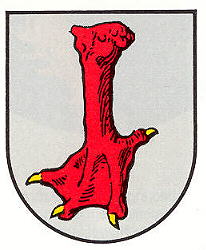Geinsheim (Neustadt): Difference between revisions
Jump to navigation
Jump to search
Knorrepoes (talk | contribs) m (Text replace - "'''Origin/meaning :'''<br/>" to "====Origin/meaning====") |
Knorrepoes (talk | contribs) m (Text replace - "|width="15%"|50 px|right |}" to "|width="15%"|50 px|right |}<seo title="Wappen, Gemeindewappen" />") |
||
| Line 3: | Line 3: | ||
|width="70%" align="center" |'''Heraldry of the World<br/>Civic heraldry of [[Germany]] - [[Deutsche Wappen|Deutsche Wappen (Gemeindewappen/Kreiswappen)]]''' | |width="70%" align="center" |'''Heraldry of the World<br/>Civic heraldry of [[Germany]] - [[Deutsche Wappen|Deutsche Wappen (Gemeindewappen/Kreiswappen)]]''' | ||
|width="15%"|[[File:Germany.jpg|50 px|right]] | |width="15%"|[[File:Germany.jpg|50 px|right]] | ||
|} | |}<seo title="Wappen, Gemeindewappen" /> | ||
'''GEINSHEIM''' | '''GEINSHEIM''' | ||
Revision as of 17:19, 5 November 2012
| Heraldry of the World Civic heraldry of Germany - Deutsche Wappen (Gemeindewappen/Kreiswappen) |
GEINSHEIM
State : Rheinland-Pfalz
Urban district (Stadtkreis) : Neustadt an der Weinstrasse
Incorporated into : 1969 Neustadt an der Weinstrasse
Origin/meaning
The arms were granted on May 15, 1845.
The goose-foot is a canting symbol, the original name is Gensheim (goose-home). The goose-foot already appeared on the seal of the city known since 1722. In 1839 the Bavarian State Herald wanted to replace the arms with a tree trunk. The council refused to the proposal and refused the use of arms altogether. However, when they realized that the goose-foot was a historical symbol, they proposed to adopt the foot in the arms, which was granted by the King against the will of the herald.
Literature : Debus, 1988.

